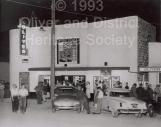26
Southern Okanagan Secondary School shortly after opening20th Centiry, Circa 1941
Oliver, British Columbia, Canada
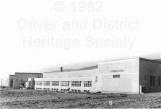 Credits:
Credits:Kelowna Museum
27
The Oliver sawmill was a long-standing and important component of the town's economy. Bought by Harry Fairweather from the government in 1925, the mill originally operated to help construct important buildings, as well as lumber for the canal project. It was moved to south-western Oliver, presently the site of Oliver's major industrial centres. Shortly after being moved, the mill assumed operations with logging companies as far as the Kettle Valley. Diversifying its income, Fairweather invested in crate-building technologies, shipping around 1,250,000 boxes anually, and even more to be used as ammunition crates during World War II.The Fairweather Lumber Company's saw and plane mills logging, processing, and manufacturing jobs employed 106 people in 1955, as well as seasonal workers building boxes. The mill closed its doors and was dimantled in 1967
28
Oliver Sawmill20th Century, Circa 1940's
Oliver, British Columbia, Canada
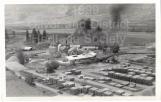 Credits:
Credits:Miller, Douglas
29
The first hospital in the Oliver area, St. Martin's Hospital, was built in 1942. Costing over $130,000 to build, the operation was fulfilled completely by the Sisters of St. Ann. The hospital was staffed for thirty-one years, but the technological limitations of the building, combined with the growing town, meant that the hospital was insufficient for the town.30
St. Martins' Hospital under construction20th Centiry, 1942
Oliver, British Columbia, Canada
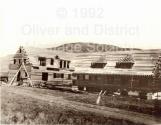 Credits:
Credits:Kelowna Photo Bank
31
St. Martin's Hospital was the primary medical centre in Oliver from 1942 to 1973, when it finally closed its doors. The structure of the building and its funding did not lend it to technological upgrades, and the Okanagan General Hospital opened in 1972 had more capacity and room for technology and patients. The St. Martin's Hospital building was demolished in 1981.32
St. Martin's Hospital20th Century, Circa 1960
Oliver, British Columbia, Canada
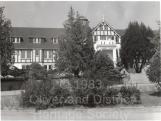 Credits:
Credits:The Oliver Chronicle
33
The Oliver Theatre, a sure sign of a growing community, opened its doors in 1946. While the interior of the theatre has received significant upgrades since then, it still remains on the same site, the outside largely unchanged today.35
Prior to 1954, the Okanagan River that runs alongside Oliver was unchanneled, and meandered along its length. Due to spring meltoff, the river was prone to flooding: a great inconvenience to farmers and persons living near the river. A project was completed in 1954 which channelized and dyked the river, removing some 24km of its length, and effectively destroying over 88% of the riparian wetlands.36
Flooding in northern Oliver20th Century, Circa 1948
Oliver, British Columbia, Canada
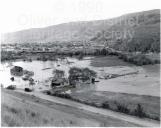 Credits:
Credits:Scott's Photography
37
Because the Okanagan River used to meander along its length, a considerable amount of water soaked into the ground, creating a marsh-like riparian habitat, which was home to many now-endagered species. The channelization of the Okanagan River is considered by many to be the single greatest environmental tragedy in the Okanagan. The Okanagan Nation Fisheries Commission and Colville Confederated Tribes from the United States are working to try and restore a 17km length of the river to its natural state.38
Okanagan River prior to straightening20th Century, Circa 1945
Oliver, British Columbia, Canada
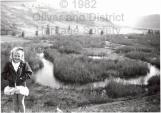 Credits:
Credits:Reinhart, Edith
